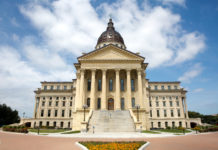Under CMS regulations, nursing facilities are required to conduct two emergency preparedness testing exercises annually – with exercises alternating between full-scale functional exercises and exercises of choice (mock drill, table-top exercise, workshop). However, if they experience an actual natural or man-made emergency that requires activation of its emergency plan, the provider will be exempt from their next required full-scale community-based exercise or individual, facility-based functional exercise following the onset of the actual event.
In October 2020, CMS issued a memo to affirm and clarify this exemption based on activation of emergency plans and ensure that surveyors and providers were aware of it and how to document it. As we approached the first anniversary of the Public Health Emergency earlier this Spring, LeadingAge asked CMS whether providers that continued to operate under their emergency plan into a second year once again be exempt from the full-scale exercise. At that time, CMS said no – there would not be a second exemption for a continuous emergency. However, this week CMS issued a revised memorandum QSO-20-41-All that reverses that guidance.
For inpatient providers, including long-term care facilities, the memo provides as follows:
If the facility is still operating under its currently activated emergency plan, any currently-activated emergency plan will be recognized by surveyors as having met the full-scale exercise requirement for 2021 (even if it claimed the exemption for the 2020 full-scale exercise). If they claimed the full-scale exercise exemption in 2020 based on their activated emergency plan and have since resumed normal operating status, the provider is expected to complete its required full-scale exercise in 2021, unless it has reactivated its emergency plan for an actual emergency during its 12-month cycle for 2021. This exemption applies to the next required full-scale exercise only, not the exercise of choice, based on the provider’s 12-month exercise cycle. The provider determines the exercise cycle (e.g., calendar year, fiscal year or another 12- month timeframe). Documentation of the activation of an emergency plan may include, but is not limited to the following:
- Notice of activation to staff via electronic systems (alerts);
- Proof of patient transfers and changes in daily operations based on the emergency;
- Initiation of additional safety protocols, for example, mandate for the use of personal protective equipment (PPE) for staff, visitors and patients as applicable;
- Coordination with state and local emergency officials;
- Minutes of board/facility meetings;
- 1135 Waiver (individual or use of blanket flexibilities); or
- Incident command system-related reports, such as situation reports or incident action plans.
See the complete QSO-20-41-All for additional information and examples.
President’s HCBS Proposal to Be Introduced Soon. Advance copies of the one-pager and section-by-section can be found here.




